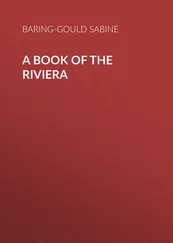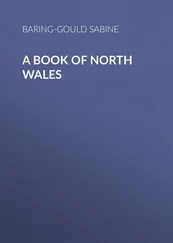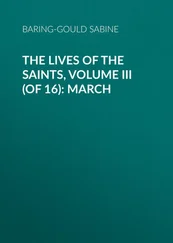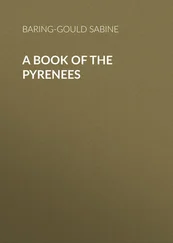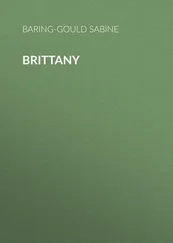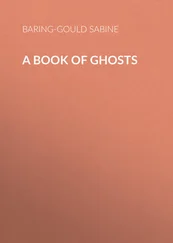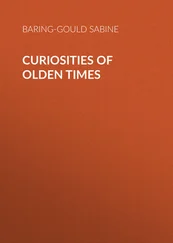Sabine Baring-Gould - A Book of Dartmoor
Здесь есть возможность читать онлайн «Sabine Baring-Gould - A Book of Dartmoor» — ознакомительный отрывок электронной книги совершенно бесплатно, а после прочтения отрывка купить полную версию. В некоторых случаях можно слушать аудио, скачать через торрент в формате fb2 и присутствует краткое содержание. Жанр: foreign_antique, foreign_prose, на английском языке. Описание произведения, (предисловие) а так же отзывы посетителей доступны на портале библиотеки ЛибКат.
- Название:A Book of Dartmoor
- Автор:
- Жанр:
- Год:неизвестен
- ISBN:нет данных
- Рейтинг книги:5 / 5. Голосов: 1
-
Избранное:Добавить в избранное
- Отзывы:
-
Ваша оценка:
- 100
- 1
- 2
- 3
- 4
- 5
A Book of Dartmoor: краткое содержание, описание и аннотация
Предлагаем к чтению аннотацию, описание, краткое содержание или предисловие (зависит от того, что написал сам автор книги «A Book of Dartmoor»). Если вы не нашли необходимую информацию о книге — напишите в комментариях, мы постараемся отыскать её.
A Book of Dartmoor — читать онлайн ознакомительный отрывок
Ниже представлен текст книги, разбитый по страницам. Система сохранения места последней прочитанной страницы, позволяет с удобством читать онлайн бесплатно книгу «A Book of Dartmoor», без необходимости каждый раз заново искать на чём Вы остановились. Поставьте закладку, и сможете в любой момент перейти на страницу, на которой закончили чтение.
Интервал:
Закладка:
S. (Sabine) Baring-Gould
A Book of Dartmoor / Second Edition
At the request of my publishers I have written A Book of Dartmoor . I had already dealt with this upland district in two chapters in my Book of the West , vol. i., "Devon." But in their opinion this wild and wondrous region deserved more particular treatment than I had been able to accord to it in the limited space at my disposal in the above-mentioned book.
I have now entered with some fulness, but by no means exhaustively, into the subject; and for those who desire a closer acquaintance with, and a more precise guide to the several points of interest on "the moor," I would indicate three works that have preceded this.
1. Mr. J. Brooking Rowe in 1896 republished the Perambulation of Dartmoor , first issued by his great-uncle, Mr. Samuel Rowe, in 1848.
The original work was written by a man whose mind was steeped in the crude archæological theories of his period. The new editor could not dispense with this matter, which pervaded the work, without a complete recasting of the book, and this he was reluctant to attempt. He limited himself to cautioning the reader to put no trust in these exploded theories. The result is that the reader is tripping over uncertain ground, never knowing what is to be accepted and what rejected.
2. Mr. J. H. W. Page's Exploration of Dartmoor , 1889, is admirable as a guide. The author, however, was unhappily ignorant of prehistoric archæology, and allowed himself to be led astray by the false antiquarianism that had marked the early writers. Consequently, his book is capital as a guide to what is to be seen, but eminently unreliable in its explanation of the character and age of the antiquities.
3. A capital book is Mr. W. Crossing's Amid Devonia's Alps , 1888, which is wholly free from pseudo-antiquarianism. It is brief, it is small and cheap, and an admirable handbook for pedestrians.
In no way do I desire to supersede these works. I have taken pains rather to supplement them than to step into the places occupied by their writers.
The plan I have adopted in this gossiping volume is to give a general idea of the moor and of its antiquities – the latter as interpreted by up-to-date archæologists – and then to suggest rambles made from certain stations on the fringe, or in the heart of the region.
Here and there it has been inevitable that I should twice mention the same object of interest, once in the introductory portion, and again when I have to refer to it as coming within the radius of a proposed ramble.
As a boy I had an uncle, T. G. Bond, who lived near Moreton Hampstead, and who was passionately devoted to Dartmoor. He inspired me with the same love. In 1848 he presented me, as a birthday present, with Rowe's Perambulation of Dartmoor . It arrested my attention, engaged my imagination, and was to me almost as a Bible. When I obtained a holiday from my books, I mounted my pony and made for the moor. I rode over it, round it, put up at little inns, talked with the moormen, listened to their tales and songs in the evenings, and during the day sketched and planned the relics that I then fondly supposed were Druidical.
The child is father to the man. Years have rolled away. I have wandered over Europe, have rambled to Iceland, climbed the Alps, been for some years lodged among the marshes of Essex – yet nothing that I have seen has quenched in me the longing after the fresh air, and love of the wild scenery of Dartmoor. There is far finer mountain scenery elsewhere, but there can be no more bracing air, and the lone upland region possesses a something of its own – a charm hard to describe, but very real – which engages for once and for ever the affections of those who have made its acquaintance. "After all said," observed my uncle to me one day, when my father had dilated on the glories of the Pyrenees, "Dartmoor is to itself, and to me – a passion." And to his memory I dedicate this volume.
My grateful thanks are due to Messrs. R. Burnard, P. F. S. Amery, J. Shortridge, and C. E. Robinson for permission to employ photographs taken by them.
S. BARING-GOULDLew Trenchard, Devon
CHAPTER I
BOGS
The rivers that flow from Dartmoor – The bogs are their cradles – A tailor lost on the moor – A man in Aune Mire – Some of the worst bogs – Cranmere Pool – How the bogs are formed – Adventure in Redmoor Bog – Bog plants – The buckbean – Sweet gale – Furze – Yellow broom – Bee-keeping.
Dartmoor proper consists of that upland region of granite, rising to nearly 2,000 feet above the sea, and actually shooting above that height at a few points, which is the nursery of many of the rivers of Devon.
The Exe, indeed, has its source in Exmoor, and it disdains to receive any affluents from Dartmoor; and the Torridge takes its rise hard by the sea at Wellcombe, within a rifle-shot of the Bristol Channel, nevertheless it makes a graceful sweep – tenders a salute – to Dartmoor, and in return receives the liberal flow of the Okement. The Otter and the Axe, being in the far east of the county, rise in the range of hills that form the natural frontier between Devon and Somerset.
But all the other considerable streams look back upon Dartmoor as their mother.
And what a mother! She sends them forth limpid and pure, full of laughter and leap, of flash and brawl. She does not discharge them laden with brown mud, as the Exe, nor turned like the waters of Egypt to blood, as the Creedy.
A prudent mother, she feeds them regularly, and with considerable deliberation. Her vast bogs act as sponges, absorbing the winter rains, and only leisurely and prudently does she administer the hoarded supply, so that the rivers never run dry in the hottest and most rainless summers.
Of bogs there are two sorts, the great parental peat deposits that cover the highland, where not too steep for them to lie, and the swamps in the bottoms formed by the oozings from the hills that have been arrested from instant discharge into the rivers by the growth of moss and water-weeds, or are checked by belts of gravel and boulder. To see the former, a visit should be made to Cranmere Pool, or to Cut Hill, or Fox Tor Mire. To get into the latter a stroll of ten minutes up a river-bank will suffice.
The existence of the great parent bogs is due either to the fact that beneath them lies the impervious granite, as a floor, somewhat concave, or to the whole rolling upland being covered, as with a quilt, with equally impervious china-clay, the fine deposit of feldspar washed from the granite in the course of ages.
In the depths of the moor the peat may be seen riven like floes of ice, and the rifts are sometimes twelve to fourteen feet deep, cut through black vegetable matter, the product of decay of plants through countless generations. If the bottom be sufficiently denuded it is seen to be white and smooth as a girl's shoulder – the kaolin that underlies all.
On the hillsides, and in the bottoms, quaking-bogs may be lighted upon or tumbled into. To light upon them is easy enough, to get out of one if tumbled into is a difficult matter. They are happily small, and can be at once recognised by the vivid green pillow of moss that overlies them. This pillow is sufficiently close in texture and buoyant to support a man's weight, but it has a mischievous habit of thinning around the edge, and if the water be stepped into where this fringe is, it is quite possible for the inexperienced to go under, and be enabled at his leisure to investigate the lower surface of the covering duvet of porous moss. Whether he will be able to give to the world the benefit of his observations may be open to question.
Читать дальшеИнтервал:
Закладка:
Похожие книги на «A Book of Dartmoor»
Представляем Вашему вниманию похожие книги на «A Book of Dartmoor» списком для выбора. Мы отобрали схожую по названию и смыслу литературу в надежде предоставить читателям больше вариантов отыскать новые, интересные, ещё непрочитанные произведения.
Обсуждение, отзывы о книге «A Book of Dartmoor» и просто собственные мнения читателей. Оставьте ваши комментарии, напишите, что Вы думаете о произведении, его смысле или главных героях. Укажите что конкретно понравилось, а что нет, и почему Вы так считаете.


